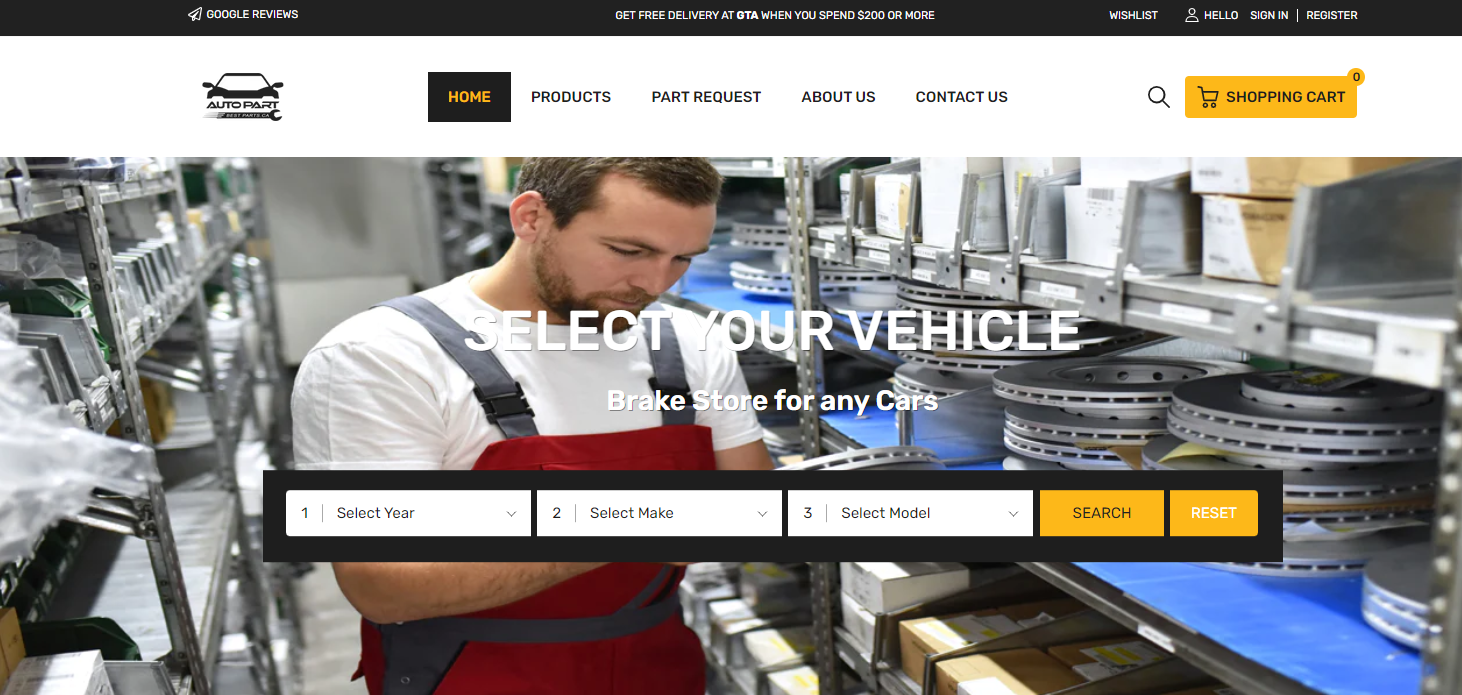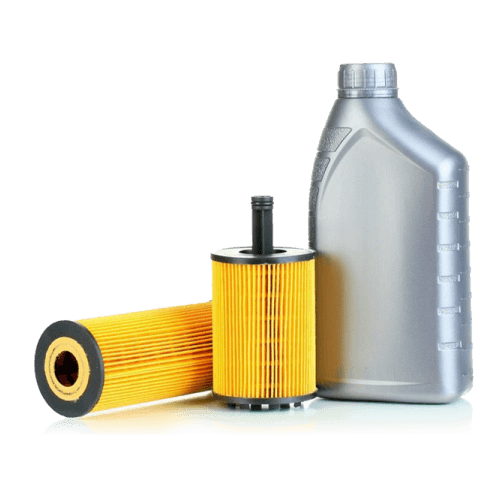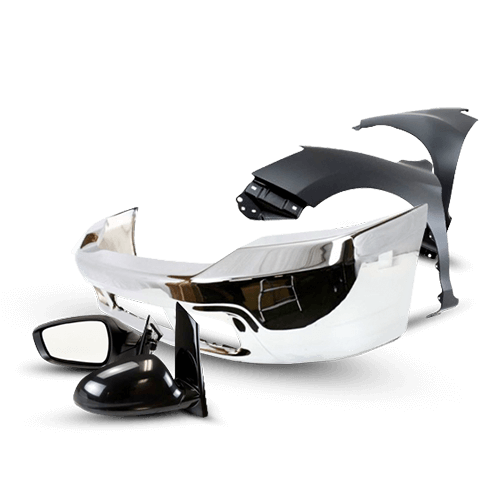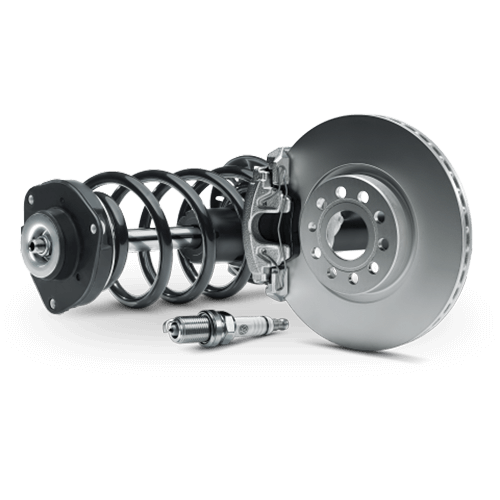
How Often Should You Replace Your Brakes? Full Brake Maintenance Guide
Your vehicle’s brake system is one of the most critical components when it comes to safety, performance, and long-term reliability. Whether you’re commuting through traffic, navigating wet roads, or driving in the mountains, your ability to stop safely depends on well-maintained brakes.
Brake system maintenance refers to the ongoing care, inspection, and replacement of key braking components such as brake pads, rotors, calipers, fluid, and associated hardware. Just like routine oil changes or tire rotations, brake maintenance is essential to keeping your car functioning properly and preventing more costly repairs.
Ignoring your car brake maintenance routine can lead to dangerous performance issues, such as brake fade, increased stopping distance, or even total brake failure. Most experts recommend inspecting your brakes every 10,000 to 15,000 miles, with brake pad replacements typically needed between 25,000 and 70,000 miles, depending on your driving style, vehicle type, and environment. Rotors and brake fluid also have service intervals that, if neglected, can result in expensive damage or safety risks.
What Is Brake System Maintenance?
Brake system maintenance refers to the regular inspection, servicing, and replacement of the components that make up your vehicle’s braking system. Its primary goal is to ensure your car can stop safely and predictably under all driving conditions. From the brake pedal to the rotors, every part must function properly to maintain control, especially in emergencies.
Key Components of the Brake System
The modern brake system includes several interconnected parts, each with a specific function:
- Brake Pads: These are the friction materials that press against the rotors to slow or stop your vehicle. They wear out over time and are typically replaced every 25,000 to 70,000 miles depending on driving habits.
- Brake Rotors (or Discs): These metal discs rotate with your wheels and work in tandem with the pads. Worn or warped rotors reduce stopping efficiency and may need resurfacing or replacement.

- Calipers: These clamp the pads onto the rotors when you press the brake pedal. Caliper pins can seize if not cleaned or lubricated, leading to uneven pad wear or brake drag.

- Brake Fluid: This hydraulic fluid transfers force from the pedal to the calipers. It must be clean and moisture-free to avoid brake fade or total system failure. Fluid should be flushed every 2–3 years.
- Brake Lines & Hoses: These carry brake fluid to each wheel. They must be leak-free and flexible—aging hoses can swell or crack under pressure.
- ABS (Anti-lock Braking System): This safety system prevents wheel lock-up during emergency braking. It includes sensors, electronic modules, and actuators that should be checked if warning lights appear.
Signs You Need Brake Service: Complete Warning Guide
Recognizing the early warning signs of brake wear can save you hundreds of dollars and potentially prevent accidents. Your vehicle communicates brake problems through multiple sensory cues—learning to identify them is crucial for timely maintenance.
Visual Warning Signs
Brake Pad Thickness: Most brake pads start at 10-12mm thick. When they wear down to 3mm or less, replacement is urgent. You can often see pad thickness through your wheel spokes using a flashlight. If the pad appears thinner than a quarter-inch, schedule service immediately.
Brake Dust Patterns: Excessive brake dust on one wheel compared to others indicates uneven wear, potentially from a sticking caliper. Conversely, a sudden absence of brake dust after normal accumulation might signal worn pads no longer producing friction material.
Rotor Condition: Look for deep grooves, scoring, or a pronounced lip at the rotor's edge. Blue or purple discoloration indicates overheating from excessive friction or brake dragging. Any visible cracks, no matter how small, require immediate attention.
Brake Fluid Color: Check your brake fluid reservoir monthly. Fresh fluid appears clear to light amber. Dark brown or black fluid indicates contamination and requires immediate flushing. Cloudy fluid suggests moisture absorption, reducing braking efficiency.
Auditory Warning Signs
Squealing or Squeaking: High-pitched squealing typically comes from wear indicators—small metal tabs designed to contact the rotor when pads wear thin. This built-in warning system gives you roughly 1,000-2,000 miles before replacement becomes critical. However, morning squeaks that disappear after a few stops are often just surface rust or moisture.
Grinding Sounds: Metal-on-metal grinding means you've worn through the pad material completely. Every mile driven in this condition damages your rotors, potentially turning a $300 pad replacement into an $800 complete brake job. Stop driving immediately.
Clicking or Rattling: These sounds when braking or over bumps often indicate loose hardware, worn caliper brackets, or missing anti-rattle clips. While not immediately dangerous, these issues accelerate uneven wear and reduce braking efficiency.
Physical Sensations and Performance Issues
Brake Pedal Changes:
- Soft or Spongy Pedal: Indicates air in the brake lines or moisture-contaminated fluid. The pedal sinks slowly under steady pressure.
- Hard Pedal: Requires excessive force to stop, suggesting brake booster problems or vacuum leaks.
- Pedal Pulsation: Rhythmic pulsing during braking indicates warped rotors, especially noticeable during highway-speed stops.
- Low Pedal: If your pedal travels more than halfway to the floor before engaging, you likely have worn pads, low fluid, or hydraulic system problems.
Vehicle Behavior:
- Pulling to One Side: Indicates uneven brake wear, stuck caliper, or contaminated brake fluid at one wheel.
- Longer Stopping Distances: Gradual increase in stopping distance often goes unnoticed but signals overall system wear.
- Vibration in Steering Wheel: During braking suggests warped front rotors; vibration felt in the seat indicates rear rotor problems.
- Brake Drag: Vehicle feels sluggish or wheels are hot after normal driving, indicating stuck calipers or parking brake issues.
Dashboard Warnings and Electronic Indicators
Brake Warning Light: Usually indicates low brake fluid (potentially from worn pads), parking brake engagement, or hydraulic system problems. Never ignore this light.
ABS Light: While your standard brakes still work, the anti-lock function is disabled. Common causes include faulty wheel speed sensors or low fluid levels.
Electronic Wear Sensors: Many modern vehicles have electronic pad wear sensors that trigger dashboard warnings at predetermined wear levels, typically with 2-3mm of pad remaining.
How Often Should You Replace Your Brakes?
Understanding when to replace your brakes is essential for safe driving and preventing more costly repairs. While brake parts are designed to be durable, they wear out over time depending on mileage, usage, and driving conditions.
General Replacement Intervals
The most common brake components each have different service lifespans:
Brake Pads: Typically last between 25,000 and 70,000 miles. Lighter highway use may extend their life, while frequent city driving or stop-and-go traffic wears them out faster.
Brake Rotors (Discs): Usually need replacement every 50,000 to 70,000 miles, or every second pad change. Warping or uneven wear may require resurfacing sooner.
Brake Fluid: Should be flushed and replaced every 2 to 3 years, regardless of mileage. Over time, brake fluid absorbs moisture, reducing braking performance and increasing the risk of internal corrosion.
These figures are estimates—always refer to your vehicle’s owner’s manual or service history for manufacturer-specific recommendations.
Factors That Affect Brake Lifespan
1. Driving Habits
- City Driving involves frequent braking, especially in traffic, leading to faster wear.
- Highway Driving is generally easier on brakes due to fewer stops and more consistent speeds.
- Aggressive braking, riding the brakes downhill, or sudden stops reduce lifespan considerably.
2. Vehicle Type and Load
- Heavier vehicles like SUVs, trucks, or vans place more strain on the brake system.
- Towing or hauling loads frequently also accelerates brake wear, especially in rear components.
3. Quality of Brake Components
- OEM or premium aftermarket pads and rotors often last longer and perform better under stress.
- Low-cost or generic parts may wear faster, produce more brake dust, and result in reduced stopping efficiency.
Brake System Maintenance Schedule Suggestions
Daily/Weekly Checks (Driver Responsibility)
|
Interval |
Task |
What to Look For |
Action if Abnormal |
|
Daily (while driving) |
Listen for unusual sounds |
Squealing, grinding, clicking |
Schedule inspection within 1 week |
|
Daily |
Monitor pedal feel |
Soft, hard, or low pedal |
Check fluid immediately; service if persistent |
|
Weekly |
Visual wheel inspection |
Excessive or uneven brake dust |
Note for next service |
|
Weekly |
Check brake fluid level |
Below MIN mark |
Add fluid; inspect for leaks |
Regular Maintenance Intervals
|
Mileage/Time |
Service Required |
Cost Estimate |
Importance Level |
|
Every 5,000 miles |
Visual inspection during tire rotation |
Usually free with rotation |
Preventive |
|
Every 10,000-15,000 miles |
Professional brake inspection |
$20-50 (often free) |
Critical |
|
Every 20,000-25,000 miles |
Clean and lubricate caliper slides |
$50-100 |
Preventive |
|
25,000-70,000 miles |
Replace brake pads |
$150-400 per axle |
Critical |
|
Every 2-3 years |
Brake fluid flush |
$80-150 |
Important |
|
50,000-70,000 miles |
Replace/resurface rotors |
$200-650 per axle |
Critical |
|
70,000-100,000 miles |
Replace brake hoses |
$150-300 per line |
Preventive |
|
100,000-150,000 miles |
Caliper rebuild/replacement |
$300-800 per caliper |
As needed |
Severe Service Schedule (Adjust if You Experience Any of These)
|
Driving Condition |
Adjustment to Standard Schedule |
Example |
|
City/Stop-and-go traffic |
Reduce intervals by 30-40% |
Inspect every 7,500 miles instead of 10,000 |
|
Mountainous terrain |
Reduce intervals by 25-35% |
Replace pads at 30,000 instead of 45,000 |
|
Towing/Heavy loads |
Reduce intervals by 40-50% |
Fluid flush annually |
|
Track days/Performance driving |
Inspect after each event |
May need pads every 10,000-15,000 miles |
|
Coastal/Salt exposure |
Add annual cleaning |
Prevent caliper seizing |
|
Dusty/Off-road conditions |
Increase inspection frequency |
Check every 5,000 miles |
Seasonal Maintenance Tasks
|
Season |
Specific Tasks |
Reason |
|
Spring |
Thorough cleaning and inspection |
Remove winter salt/debris buildup |
|
Summer |
Check fluid moisture content |
Prepare for hot weather demands |
|
Fall |
Pre-winter inspection |
Ensure optimal performance for wet/icy conditions |
|
Winter |
Monthly visual checks |
Salt and moisture accelerate corrosion |
Warning Thresholds - When to Take Immediate Action
|
Component |
Minimum Safe Specification |
Immediate Action Required |
|
Brake Pad Thickness |
3mm (1/8 inch) |
Below 2mm - Do not drive |
|
Rotor Thickness |
Varies by vehicle (check manual) |
At or below minimum specification |
|
Brake Fluid |
Clear to light amber |
Black or contaminated |
|
Pedal Travel |
Less than 1/2 to floor |
More than 2/3 to floor |
|
Stopping Distance |
Per manufacturer spec |
25% increase from new |
|
Rotor Runout |
Less than 0.002 inches |
Exceeds specification |
Record Keeping Recommendations
- Document all brake services with date and mileage
- Keep receipts for warranty claims
- Note any unusual observations between services
- Track pad life to predict future replacement needs
- Record which brand/type of parts used for consistency
FAQs About Brake System Maintenance
1. How long should car brakes last?
Most car brakes - specifically the brake pads—last between 25,000 and 70,000 miles, depending on driving habits, vehicle weight, and the quality of the brake components. City drivers or those in stop-and-go traffic may experience shorter intervals, while highway drivers may extend pad life.
2. How often do I need new brake pads?
You typically need to replace brake pads every 30,000 to 50,000 miles, but always check for signs like squealing, reduced braking response, or a worn pad indicator. Some vehicles have electronic sensors that notify you when replacement is needed.
3. Is it okay to replace brake pads without rotors?
Yes, if your rotors are still within manufacturer specs and not warped or heavily grooved, replacing only the brake pads is acceptable. However, worn rotors can cause premature pad wear and reduced braking performance, so always inspect both together.
4. Should I replace brakes before a road trip?
Absolutely. Worn brakes can compromise stopping power and increase the risk of accidents—especially under highway or mountain driving conditions. If your pads or rotors are near the end of their life, replace them before long-distance travel.
5. What causes brakes to wear faster?
Several factors accelerate brake wear:
- Frequent hard braking or sudden stops
- Driving in hilly or mountainous terrain
- Towing heavy loads
- Low-quality brake components
- Worn suspension parts affecting brake alignment
Adopting smoother driving habits and scheduling regular inspections can help extend brake life.






















































